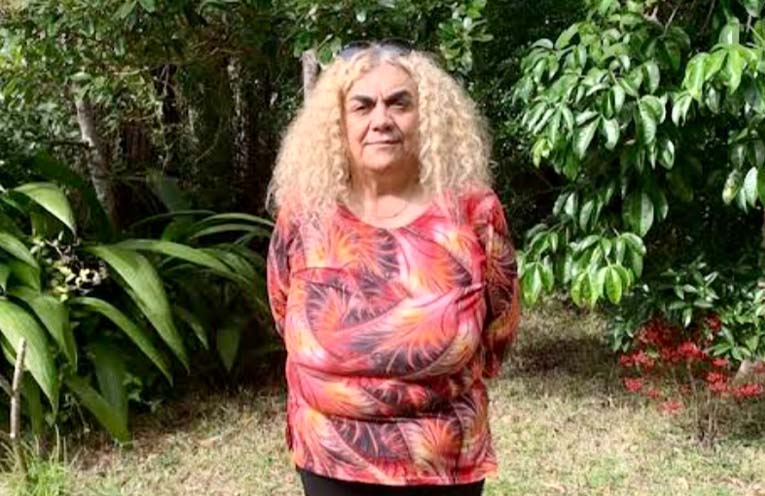
A GROUP of Coffs Harbour Indigenous Elders have voiced concerns that Closing the Gap initiatives continue to fail to make a real impact in their communities.
Closing the Gap is a national agreement intended to enable Aboriginal and Torres Strait Islander people and governments to work together to overcome inequality experienced by Indigenous Australians.
 Advertise with News of The Area today.
Advertise with News of The Area today.It’s worth it for your business.
Message us.
Phone us – (02) 4981 8882.
Email us – media@newsofthearea.com.au
In 2020, all Australian governments, along with the Coalition of Aboriginal and Torres Strait Islander Peak Organisations, signed the National Agreement on Closing the Gap.
They committed to mobilising all avenues available to them ‘to overcome the entrenched inequality faced by too many Aboriginal and Torres Strait Islander people so that their life outcomes are equal to those of all Australians’.
A ‘Review of the National Agreement on Closing the Gap’ by the Productivity Commission released earlier this month found that governments are not adequately delivering on this commitment.
The final report of the Commission’s first three-yearly review of government action on the agreement finds governments have failed to fully grasp the nature and scale of change required to meet the obligations they signed up to under the agreement.
“To date, most government actions and plans to implement the agreement are relabeled business-as-usual, or simply tweak existing ways of working,” said Commissioner Natalie Siegel-Brown.
“The agreement can and should be a blueprint for real reform, but governments will need to move beyond business as usual and address the entrenched attitudes, assumptions and ways of working that are preventing progress.”
The Coffs Harbour Experience
Yvette Pacey, an Aboriginal Elder from Coffs Harbour, spoke last week with five senior leaders within the local Indigenous community to understand their feelings around the Closing the Gap agreement.
Employed in areas of health, housing and education, these elders have broad working experience of diverse communities across the Coffs Coast.
Yvette told News Of The Area it doesn’t feel like governments are listening.
“There was a general feeling that there was a lack of understanding about cultural needs; looking through our cultural lens so to speak,” she told News Of The Area.
“Family dynamics, which can involve extended families and overcrowding, and different living circumstances, how were these taken into account?”
The Elders also have misgivings around the original Closing the Gap consultation process.
“Was there sufficient consultation done across local, regional and metropolitan areas to establish the issues and needs of Aboriginal people?” Yvette asked.
“How was information and statistics used to determine needs?
“How was it to be applied to ensure it was being utilised to do what it was meant to do?”
The Elders believe Closing the Gap is an important initiative implemented to improve outcomes for Aboriginal people for the future, but broadly lacked effective review processes to ensure targets were being met.
“Costings, budgets and strategic planning regarding financial controlling and distribution of funding – how was this measured to ensure the funding was being used for what it was intended for?
“What accountability processes and procedures were used?”
Among Yvette and the other local Elders, there was a general consensus that Closing the Gap initiatives did not change or improve the important issues.
“Matriculation rates for HSC completion have not increased significantly enough,” Yvette said.
“Did life expectancy rates increase for Aboriginal people?
“Incarceration rates within Aboriginal youth, male and female aged from fifteen to 20 increased, not reduced.
“Addiction rates with alcohol and drugs, no reduction.
“Two areas of health saw improvements in maternity and child health.
“Mental health rates, no visible change,” she said.
The Elders said that if Closing the Gap targets were not met, questions need to be asked as to why.
“Did Closing the Gap achieve the objectives it was set out to do?
“If not, then questions have to be asked and answers given as to why it did not fulfil its intended purpose.
“There are solutions out there and we need to discuss a better way, working together,” said Yvette.
The Productivity Commission’s Report makes four recommendations to the government: share power, recognise and support Indigenous Data Sovereignty, fundamentally rethink mainstream government systems and culture, and implement stronger accountability.
It found evidence of a failure to relinquish power and the persistence of ‘government knows best’ thinking.
To address this, the report’s first recommendation proposes five actions, including amending the agreement to better emphasise power sharing, and having governments recognise the expertise of Aboriginal Community Controlled Organisations in what works for their communities.
“Efforts to improve outcomes are far more likely to succeed when Aboriginal and Torres Strait Islander people lead their design and implementation,” said Productivity Commissioner Romlie Mokak.
“Nothing will change until this model of partnership, based on genuine power sharing, becomes the rule and not the exception.
“If governments do not make change on the scale that’s required, the agreement will fail and the gap will remain.
“For governments to help close the gap between improvements in the life outcomes of Indigenous and non-Indigenous Australians, they will first need to close the gap between words and action.”
The Review of the National Agreement on Closing the Gap final report is available from pc.gov.au/ctg-review.
By Andrea FERRARI